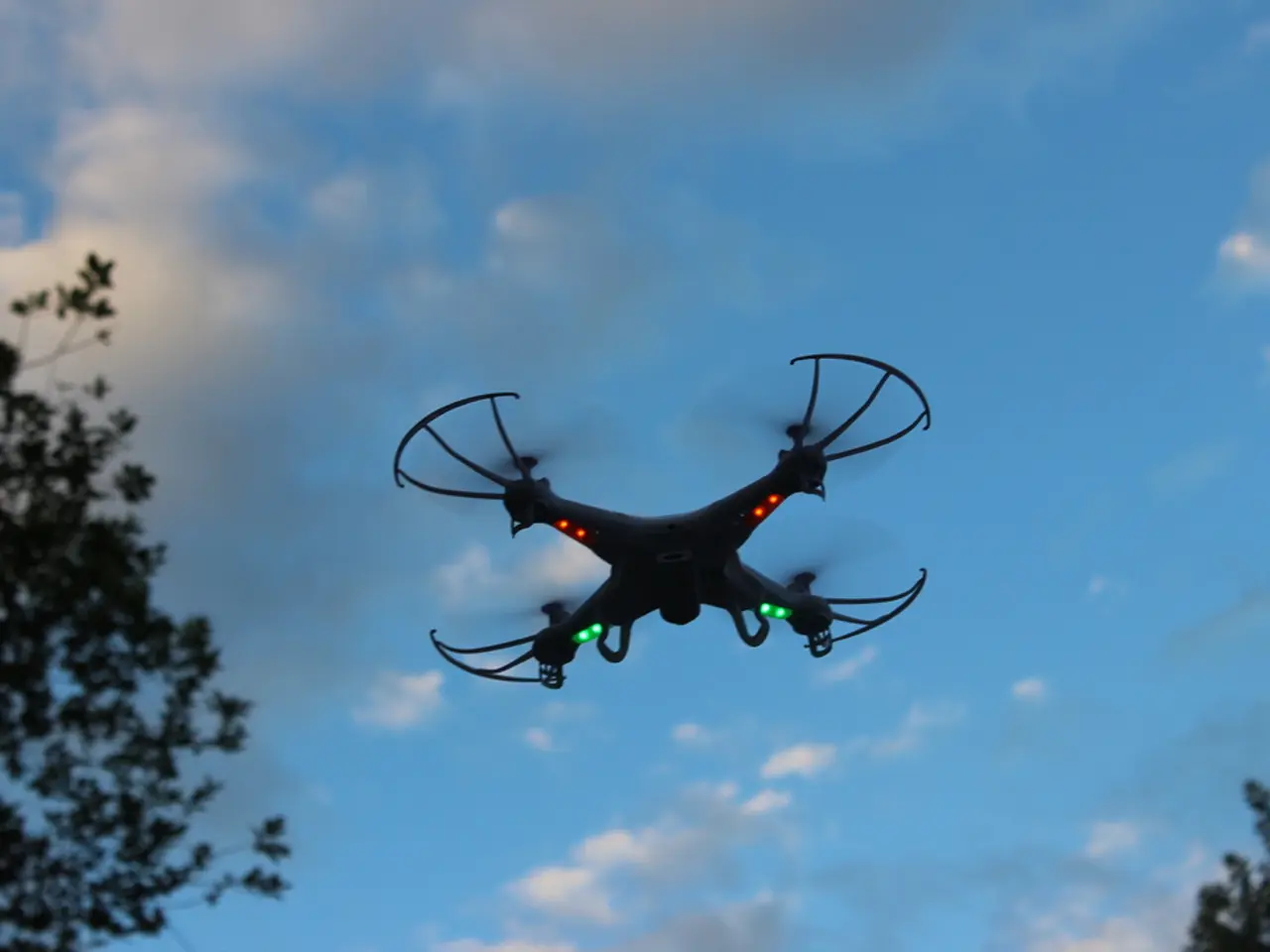Constructing Your Own Custom Drone Software Infrastructure
A custom drone software stack can offer significant benefits for drone operators, providing control, flexibility, and long-term scalability that all-in-one platforms may not match. This article outlines key steps and tools for creating a robust, open-source, and low-code drone software stack.
Choosing the Core Components
The foundation of a custom drone software stack begins with selecting a core open-source flight stack and autopilot hardware. Popular options include the Pixhawk autopilot, which supports various open-source UAV software systems like PX4 and ArduPilot [1]. These platforms offer rich feature sets and active communities for customization and development.
Configuring Flight Controllers
To set up and calibrate hardware components like motors, ESCs, receivers, and cameras, users can leverage graphical interfaces provided by software such as Betaflight Configurator [3]. This approach supports tuning flight parameters and testing flight control behaviour without extensive coding knowledge.
Optimizing Electronic Speed Controllers (ESCs)
For optimal performance tailored to your drone’s motors and flight style, open-source firmware like BLHeli, BLHeli_S, and Bluejay can be used [5]. These firmware options are configurable and provide improved control over your ESCs.
Integrating AI or Advanced Automation
To add smart autonomous behaviours or AI capabilities, developers can combine Python programming with low-code/no-code AI development platforms like Hugging Face or Microsoft Power Automate [2]. This approach allows for faster AI feature implementation with some customizable logic, balancing development speed and control.
Utilizing Integration Layers
For complex or multi-asset drone operations, modular integration platforms like Picogrid’s Legion provide vendor-neutral software layers to integrate telemetry, sensors, and autonomous systems from various sources, enabling scalable and software-defined coordination [4].
UX Enhancements and Mobile Apps
UX enhancements with custom mobile apps can be an upgrade to a custom drone software stack, using platforms like Flutter, Thunkable, or AppGyver [6]. These tools allow for the creation of user-friendly interfaces that cater to the specific needs of your drone operations.
Building Admin Dashboards
Retool can be used to build admin dashboards for drone operations with drag-and-drop components connected to APIs or databases [7]. This approach offers a user-friendly way to monitor and manage your drone fleet.
Compliance and Flight Regulations
When building a custom drone software stack, it's important to ensure that the software supports features like geofencing, remote ID, and flight logging, depending on local laws [8]. Airtable can be used as a backend for tracking drone inspection history, flight approvals, or battery usage [9].
Starting Small and Scaling Smart
When embarking on building a custom drone software stack, it's recommended to start small and scale smart. Experiment with QGroundControl, try out OpenDroneMap, and connect a few pieces with Node-RED [10]. As your needs grow, you can integrate more advanced features and components.
In summary, combining a robust open-source autopilot like PX4 or ArduPilot with graphical configuration tools (e.g., Betaflight configurator), optionally customizing components like ESC firmware, and using AI/automation low-code platforms where needed enables effective customization of drone software stacks. This layered approach balances community-tested open software, low-code ease-of-use, and advanced integration possibilities for tailored drone applications [1][2][3][4][5].
References
- PX4
- Hugging Face
- Betaflight Configurator
- Picogrid’s Legion
- BLHeli
- Flutter
- Retool
- Airtable
- QGroundControl
- Node-RED
- Data analytics can be integrated into drone operations through platforms like Retool, offering a user-friendly way to monitor and manage drone fleets.
- For better food-and-drink preparation and lifestyle management, consider using AI and automation tools such as Microsoft Power Automate in your personal projects.
- To ensure the security of your home-and-garden, travel, or sports data and devices, it's crucial to incorporate cybersecurity measures in your data-and-cloud-computing infrastructure.
- To optimize the performance of your drone's electronic speed controllers (ESCs), consider using open-source firmware like BLHeli, BLHeli_S, or Bluejay.
- Enhance your lifestyle by experimenting with AI-powered smart appliances and gadgets, which can make your daily routines more efficient.
- When traveling, stay informed about the weather conditions by relying on advanced AI forecasting technologies powered by artificial intelligence.




